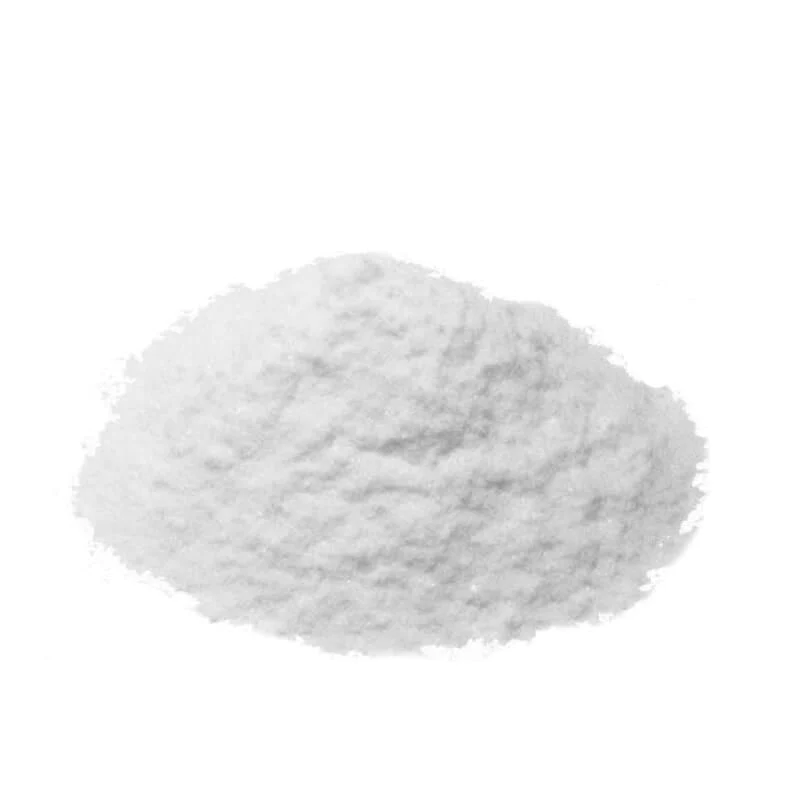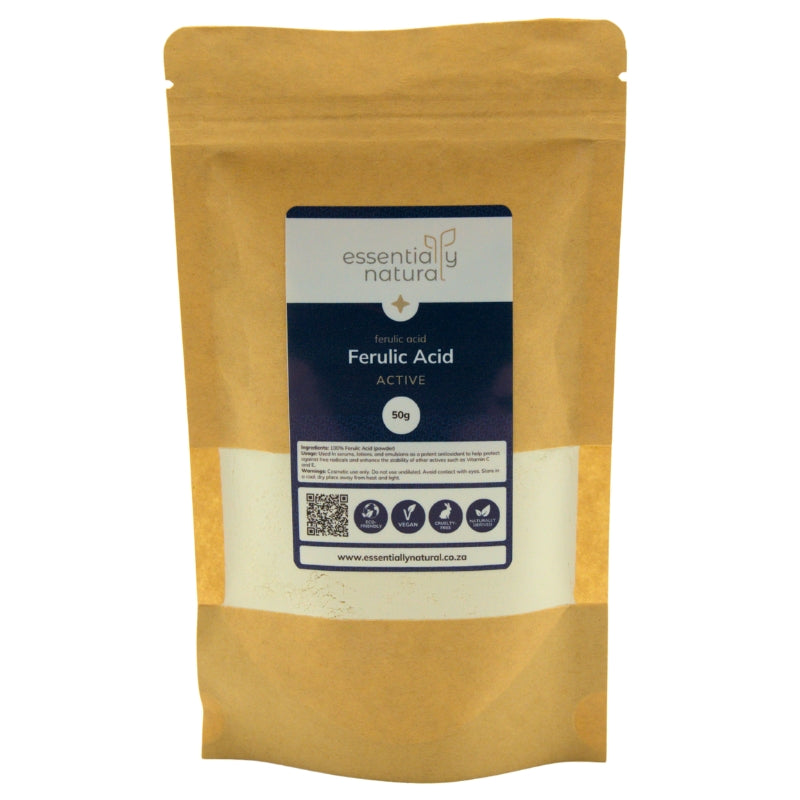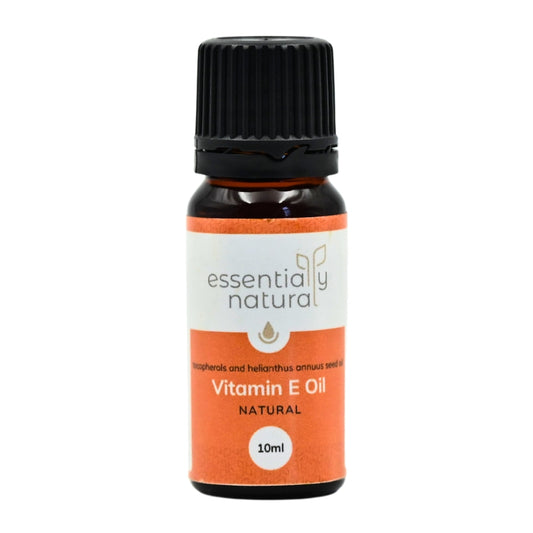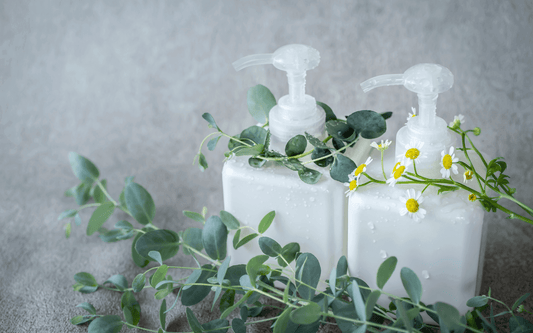
Ferulic Acid Explained: The Secret to Glowing Skin
Aiden van WykI was scrolling through YouTube shorts when a random dermatologist whispered in my ear: "It doesn't matter how cheap and empty your moisturiser is, if you have a Ferulic Acid Serum, your skin WILL glow."
Intrigued, I looked into it. Now I have a Ferulic Acid Serum on my shelf and I use it daily.
Let. Me. Explain.
What Is Ferulic Acid?
Ferulic Acid is a potent antioxidant found in the cell walls of certain fruits and grains like rice, apples and oats. Being an antioxidant, Ferulic Acid is great at neutralizing free radicals and scientifically proven to work synergistically with Vitamin C and E - making it particularly effective in anti-aging and skin brightening products.
How do anti-oxidants work?
A simplified explanation would be that there are free radicals constantly floating around -like UV light and pollution. When these radicals graze your skin, tragedy ensues. The small point where the radical meets your gentle and unprotected flesh, cell damage begins and snowballs, resulting in visible inflammation, cellular aging and cell death.
Antioxidants stop the snow balling, keeping the damage inflicted limited and hence cell death minimal.
Ferulic Acid and Sun Protection
Ferulic Acid has photoprotective properties, and is great when combined with other Photoprotective ingredients (like Zinc Oxide and Titanium Dioxide) to shield your skin from sun damage. It's stability under UV exposure makes it highly sought out in serums and creams targeting hyperpigmentation, fine lines, and wrinkles.
Why choose Ferulic Acid if there are other anti-oxidants?
I hear you - if Ferulic Acid for skin works well as a booster to other antioxidants - why not just stick with the initial products? Why the extra steps? My Ascorbic Acid is doing me good.
Well, a small note is that Ascorbic Acid breaks down and degrades very easily. Ferulic Acid helps stabilise and prolong the potency of a Vitamin C Serum.
Look - maybe I'm biased, but I prefer simple. And to keep it simple I have one product completely optimised for a certain function. That's why I have one potent Skin Brightening Serum on my shelf. I tried to optimize this further by making the water base a Liquorice Root Extract.
Crazy? Maybe. But I'd rather be crazy with bright skin than just crazy and dull :)
How to Use Ferulic Acid in Formulation
Let's dive into how to formulate with Ferulic Acid.
What is the Solubility of Ferulic Acid?
Ferulic acid is water soluble and highly soluble in alcohol-based solvents.
Dissolving Ferulic Acid into water can be a bit tricky but I found it to be very doable. The way I dissolved Ferulic Acid into the water is sprinkling the Ferulic Acid into the water while continuously stirring, like we do with Xanthan Gum.
Other ways to dissolve the Ferulic Acid would be to:
- Have the water be warm/ hot as higher temperatures increases the solubility.
- Have your water be slightly alkaline, as this would also increase solubility.
If you are creating oil-based serums, Ferulic Acid won't dissolve without a suitable solvent.
What is the preferred pH range of Ferulic Acid?
Ferulic Acid is most stable in a pH range between 3 and 5.5 and tends to function well in slightly acidic to neutral environments. If you are combining Ferulic Acid with Vitamin C, you should keep the pH at around 3.5 for optimal performance.
What is the Recommended Usage or Concentration for Ferulic Acid?
Ferulic Acid should be used at a concentration between 0.5% and 1.5% in most skincare formulations. Anything higher could cause irritation, especially for sensitive skin. A basic guideline would be:
- Serum: 0.5% - 1.5%
- Moisturiser: 0.5% - 1%
- Sunscreen Formulations: Up to 1%, to boost Photoprotection
Is Ferulic Acid Light Sensitive?
Ferulic Acid, like many antioxidants, is sensitive to light and air exposure. With exposure it can degrade and lose its efficacy. Dark, airtight containers help to minimize this degradation:
- Dark containers (like Amber Bottles) protect the product from light exposure.
- Airtight pumps or containers minimises the product's contact with oxygen, which can cause oxidation.
These packaging choices help maintain the product's potency and extend its shelf life.
What can Ferulic Acid be paired with?
Ferulic Acid pairs beautifully with:
Ferulic Acid stabilizes Vitamin C, enhancing its antioxidant properties and extending its shelf life. This increases photoprotection and improves collagen synthesis.
Together they create a potent antioxidant system, enhancing each other's effectiveness. This improves protection against free radical damage and UV radiation.
Both ingredients have anti-inflammatory properties and support skin barrier function. This enhances skin brightening and improves overall skin health.
Ferulic Acid's antioxidant properties compliment Hyaluronic Acid's hydrating effects. This improves skin hydration and protection against environmental stressors.
Panthenol's moisturizing and skin-soothing properties compliment Ferulic Acid's antioxidant effects. This enhances skin hydration, reduced inflammation, and improves skin barrier function.
Both are potent antioxidants with complimentary effects. This increases protection against UV damage and improves anti-inflammatory action.
Liquorice Root's skin-brightening properties pair well with Ferulic Acid's antioxidant effects. This enhances skin-brightening and anti-inflammatory effects.
Formulating Tip: Avoid pairing Ferulic Acid with high levels of exfoliating acids like Glycolic or Salicylic Acid, which can destabilize it and cause irritation.

























2 comments
Hi Rosila,
At this time we don’t offer training ourselves but we do work with an internationally recognised organisation, Formula Botanica, and they offer excellent education. Often with certification.
Some of our staff members learnt with Formula Botanica and it is online so you can work at your own pace.
:)
Best Wishes,
Aiden
Good day,
im a pharmacist and im from Mozambique. i would like to know, do you give any kind of trainings?
kind regards